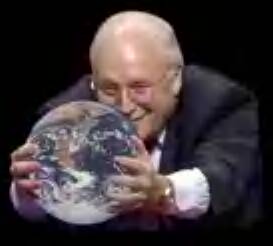Nearly two decades ago, Republicans won the West by linking Democrats to environmentalists, who supposedly cared more for the spotted owl and other favored species than they did for the jobs of loggers or miners. But now, as a boom in natural-gas drilling reshapes the region, Western Democrats have found success recasting environmentalism as a defense of threatened water supplies, fishing spots and hunting grounds. As a result, the party may hold the advantage this fall in the region’s key Congressional races. The simultaneous rise of Western energy production and the Western Democrat is no coincidence.
The Rocky Mountain drilling boom has been aided by the 2005 Energy Policy Act, which was once considered a partisan political masterstroke. In providing incentives for energy development, Republicans delivered a profitable gift to an industry that directs most of its campaign contributions to G.O.P. candidates. That gift was sweetened by the Bureau of Land Management, which, under President Bush, has expanded the amount of federal land open to energy development and increased the number of drilling permits.
But the acceleration of energy exploration has split the national Republican Party from local Republicans upset by the downsides of the energy boom. “Republicans created a monster for themselves,” said Rick Ridder, a Colorado-based Democratic consultant. “They put public policy in direct conflict with their base voters.”
In Wyoming’s Upper North Platte Valley, Jeb Steward, a Republican state representative, helped lead the successful 2007 opposition to the B.L.M.’s proposed sale of 13 oil and gas parcels. “We have customs and cultures that have developed over a hundred years based on the utilization of multiple renewable resources — agriculture, tourism, wildlife, fisheries,” Steward said. “When B.L.M. proposed issuing the leases, residents were asking, ‘What does this mean to the lifestyles that we’ve all grown accustomed to?’ ”
One wing of the Bush administration appears to have heard the message. In February, the Environmental Protection Agency asked the Bureau of Land Management to revise its plan to allow nearly 4,400 new natural-gas wells on the Pinedale Anticline in Wyoming, citing ozone pollution from drilling rigs. “We have to balance economic success, energy development and the love that the people of Wyoming have for their special places,” said Gary Trauner, the Democratic candidate hoping to replace Wyoming’s retiring Republican congresswoman, Barbara Cubin.
Energy is also likely to affect politics in two Western states where the offspring of conservation icons are running for Senate. In New Mexico, Representative Tom Udall, a Democrat and the son of Stewart Udall, secretary of the interior under Kennedy and Johnson, may face off against the Republican congresswoman Heather Wilson. Two years ago, Wilson belatedly backed Udall’s bill to limit local drilling after being criticized on the issue by a 2006 election opponent.
In Colorado, Representative Mark Udall, Tom’s cousin and the son of the late environmentalist congressman Morris (Mo) Udall, is running for the Senate against Bob Schaffer, a former Republican congressman who works for a natural-gas company. Colorado has experienced a sixfold increase in drilling permits since 1999, and the B.L.M. has leased a New Jersey-size 5.2 million acres of federal land for new energy exploration in the state. Already a conservative group has broadcast television ads attacking Udall for trying to limit drilling. But election trends suggest that such criticisms may be losing effectiveness.
Of course, a recession — and corresponding fears of job losses — could halt the political shift. At a recent hearing convened by the Colorado Oil and Gas Conservation Commission, industry workers upbraided officials for considering rules that could slow gas drilling along the Colorado-New Mexico border. Century-old anti-government emotions are now aimed at state regulators — and much of the vitriol comes from working-class Democrats.
But can they swing an election? According to Headwaters Economics, a Montana-based research group, the energy sector currently employs only 1.3 percent of the region’s work force. And mining generated just 2.9 percent of all personal income in the five natural-gas-producing Western states in 2006. By contrast, retirement benefits, service jobs and professional industries generated about 55 percent of the region’s income. Many of these sectors have an interest in reducing energy development. After all, retirees, professionals and tourism businesses often come to the region for the open spaces.
“Lots of drilling is great for the industry,” said Headwaters Economics’ associate director, Ben Alexander. “But is it good for the region as a whole?” The political battle for the West will be won by whichever party offers the most convincing answer.
(In accordance with Title 17 U.S.C. Section 107, this material is distributed without profit to those who have expressed a prior interest in receiving the included information for research and educational purposes. I.U. has no affiliation whatsoever with the originator of this article nor is I.U endorsed or sponsored by the originator.)
The Nazis, Fascists and Communists were political parties before they became enemies of liberty and mass murderers.


